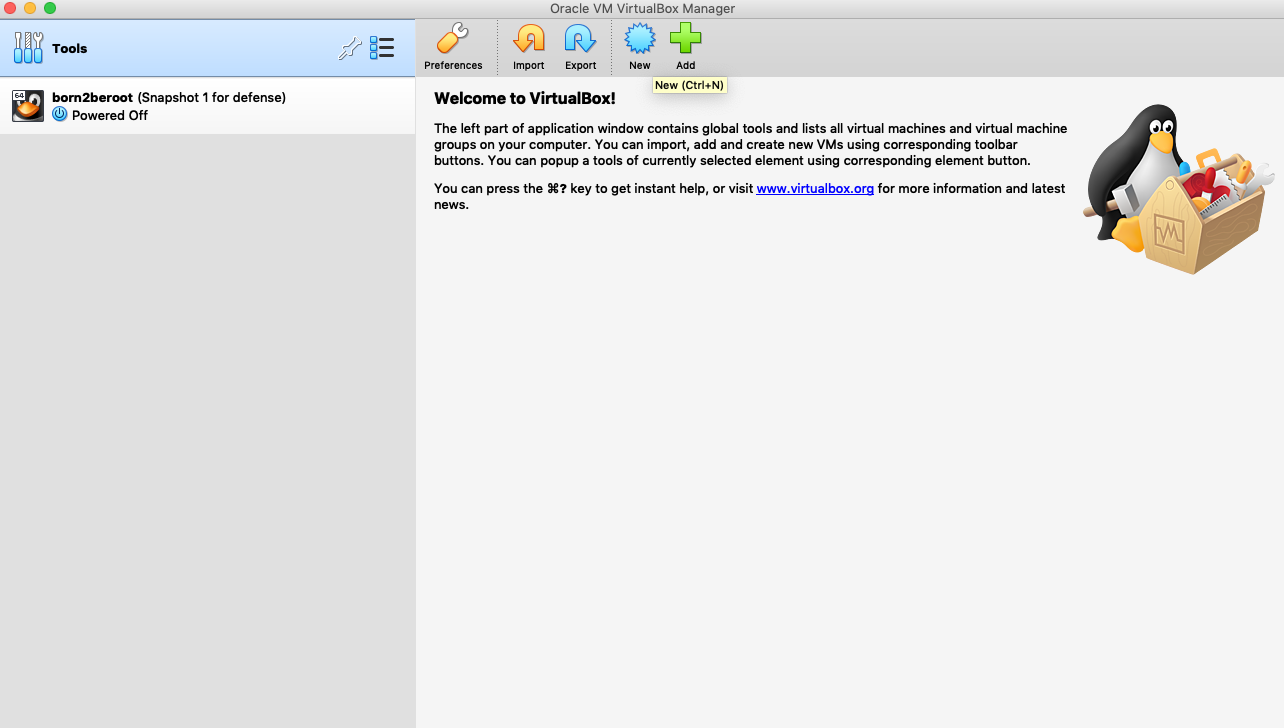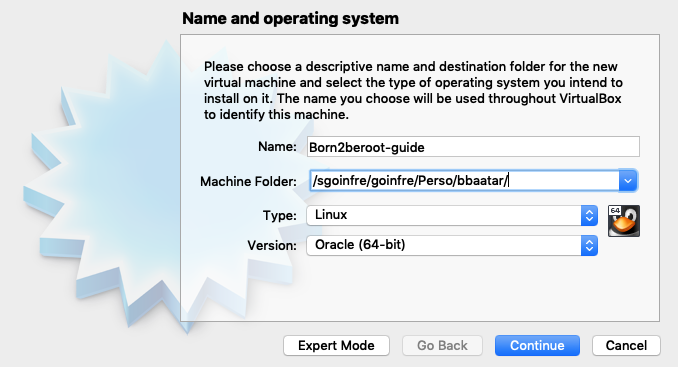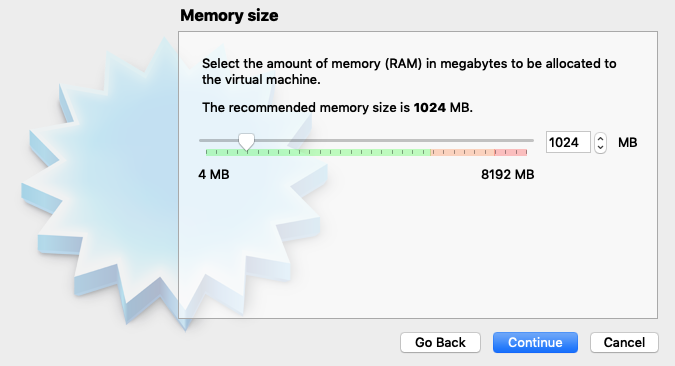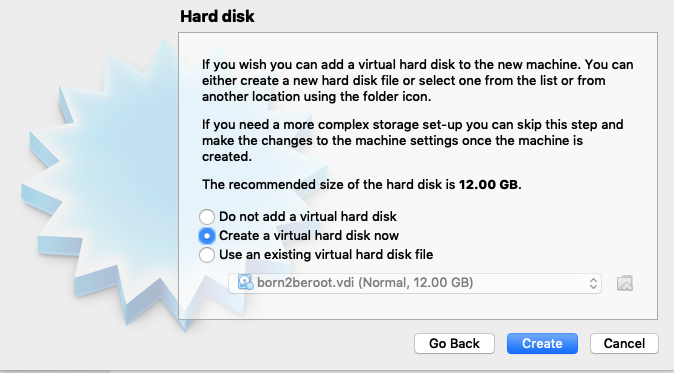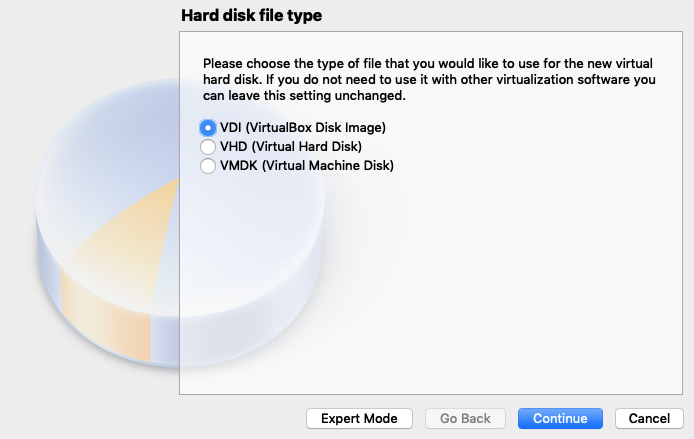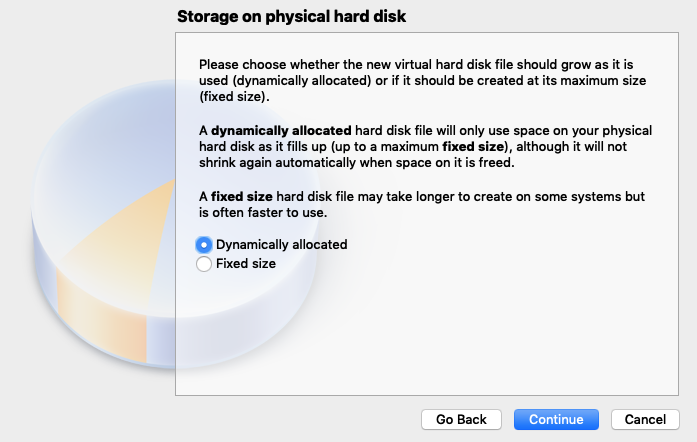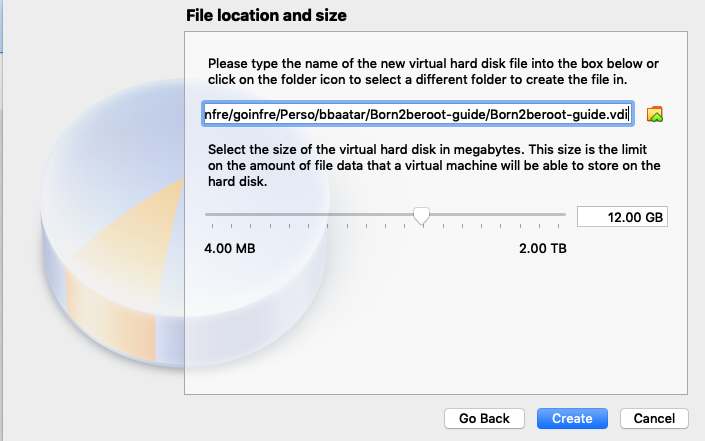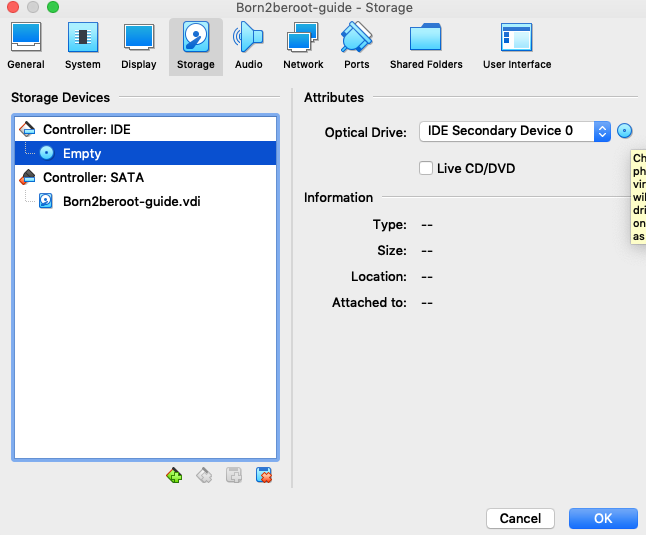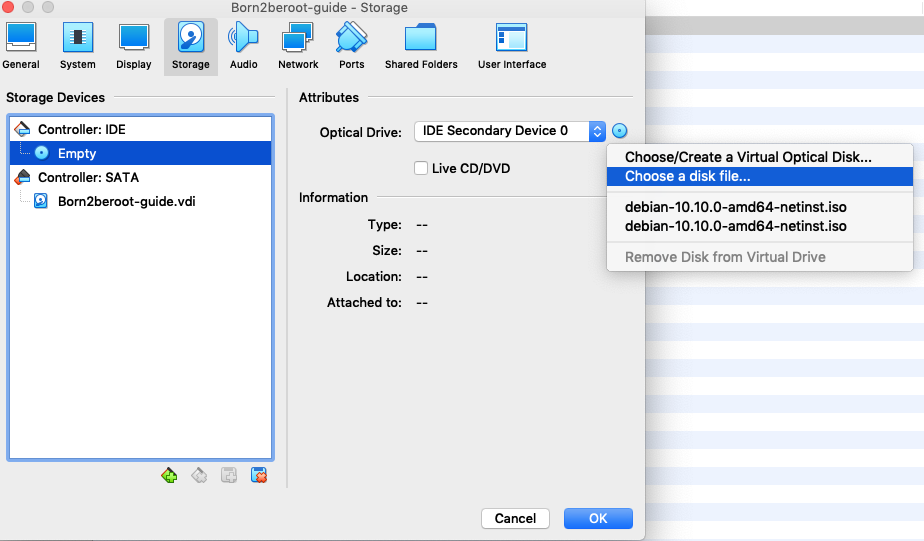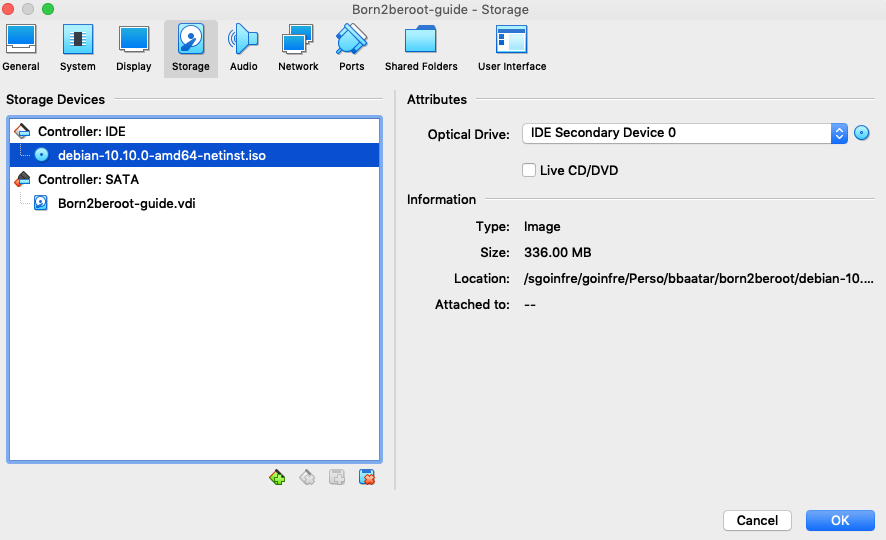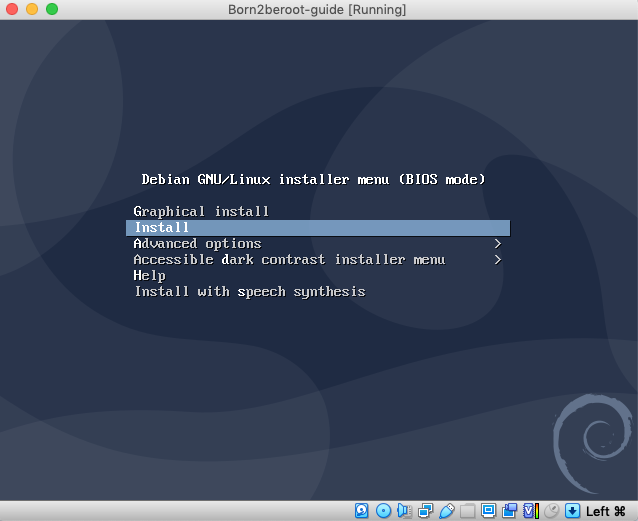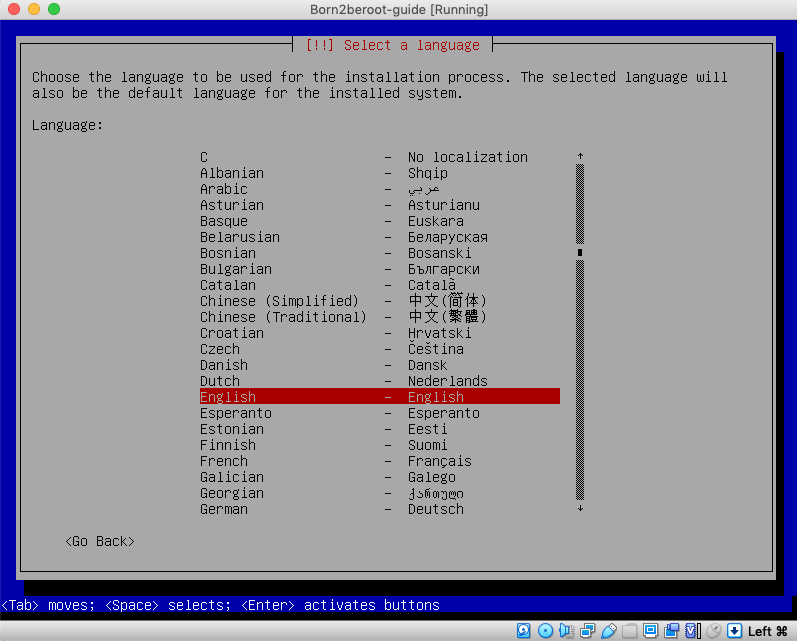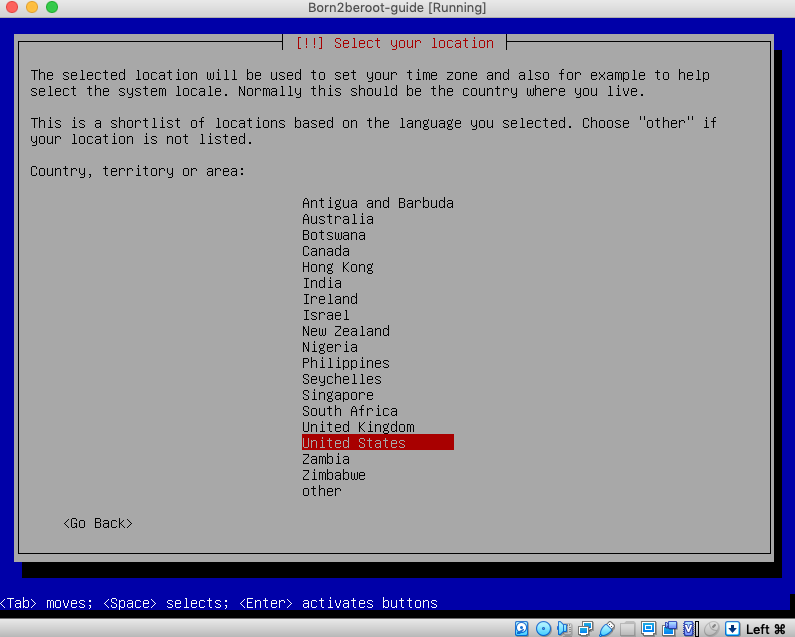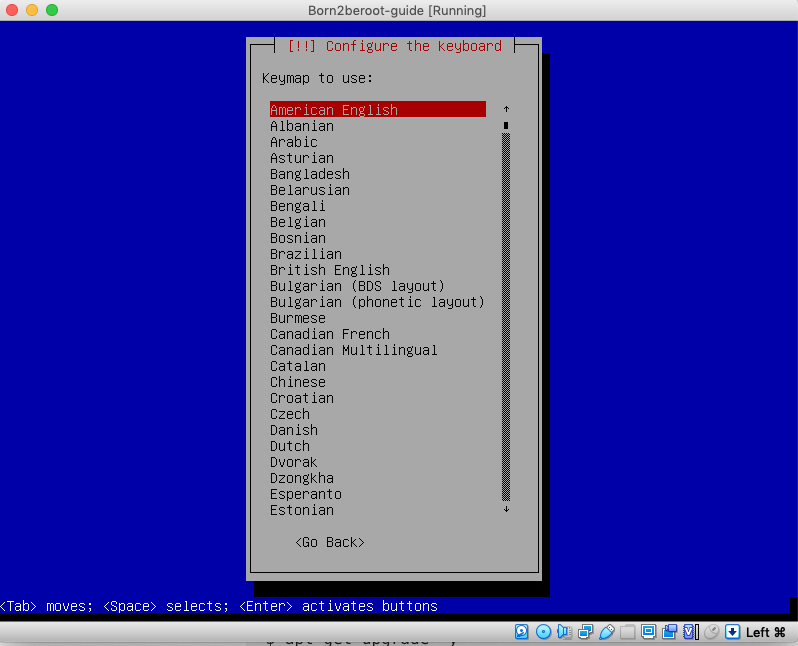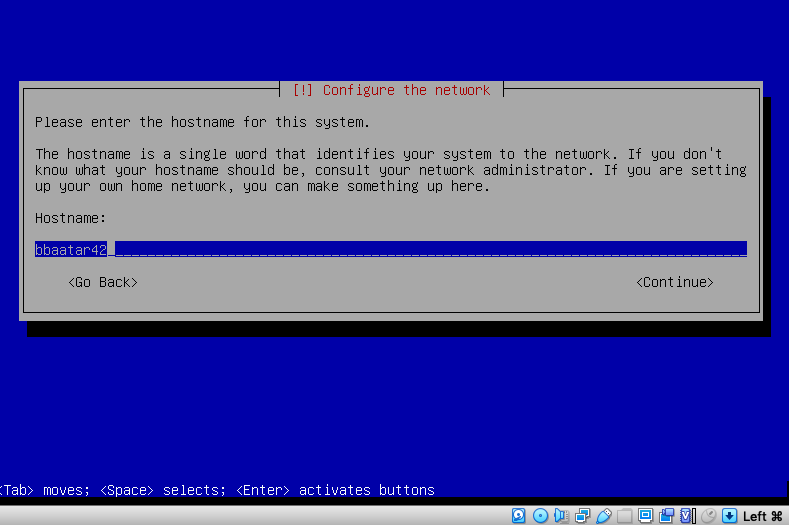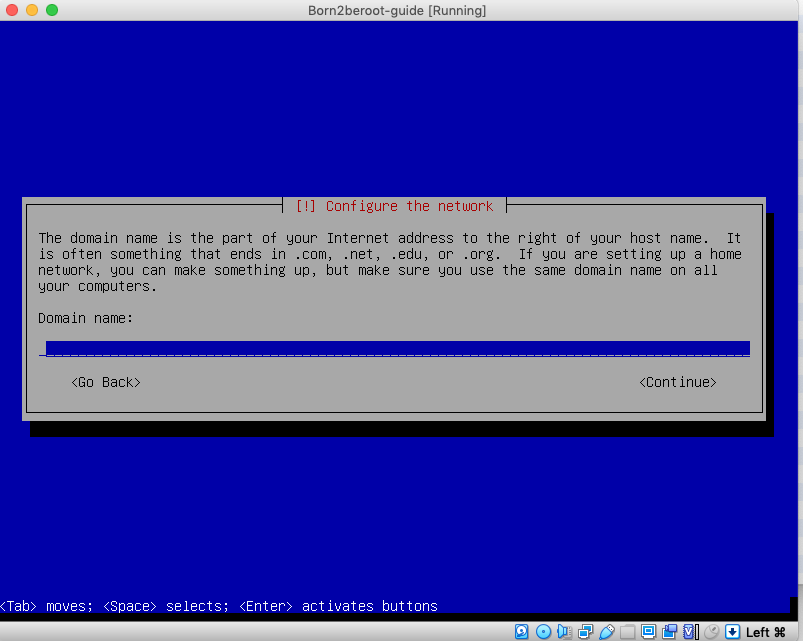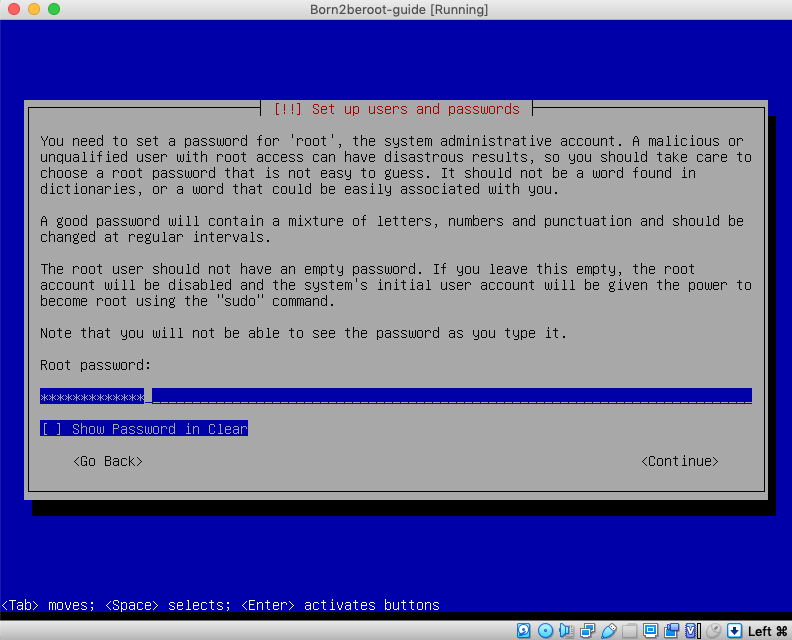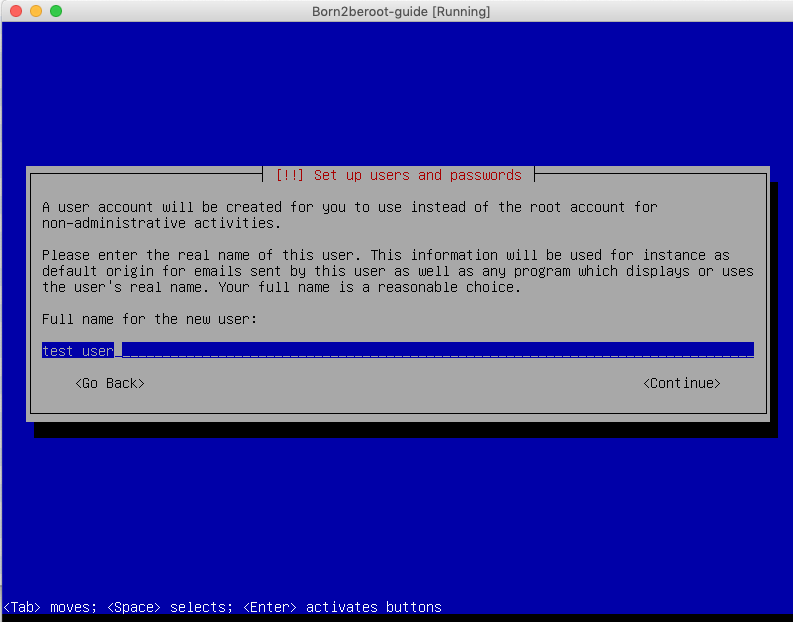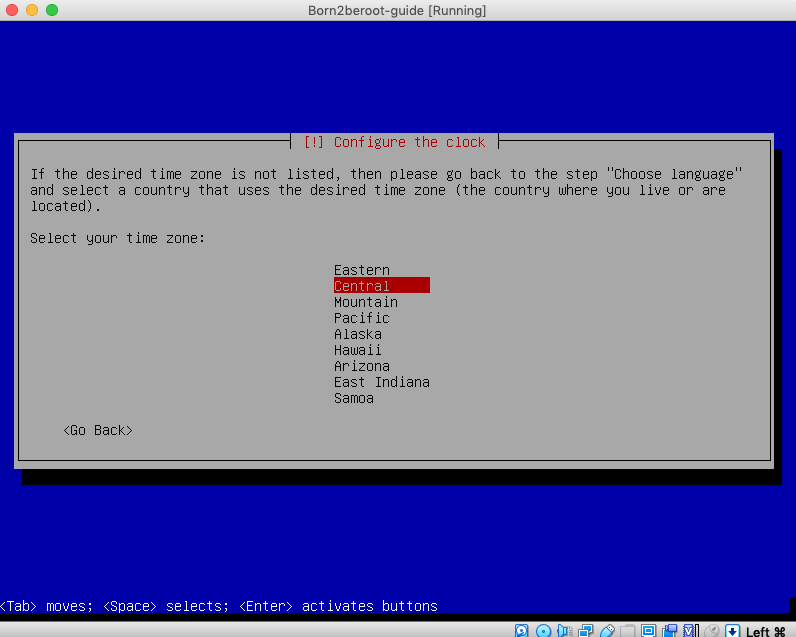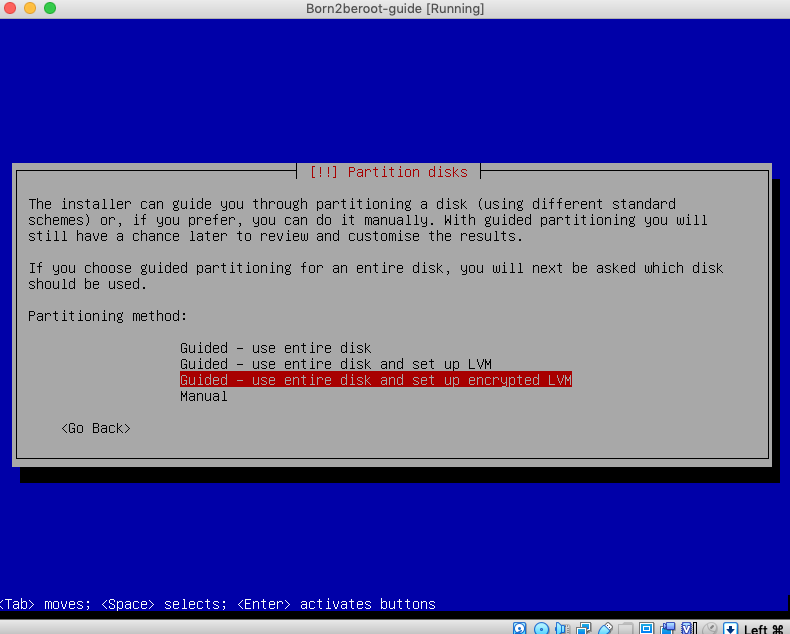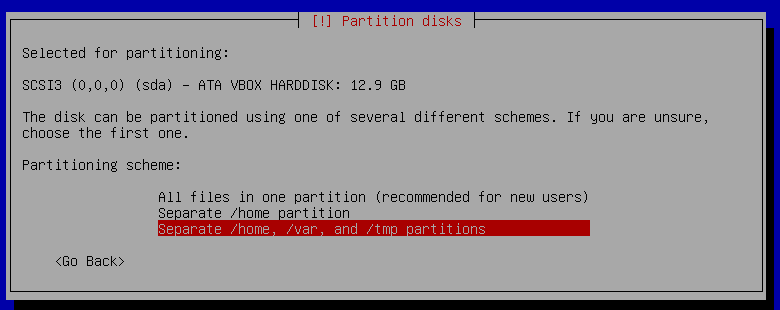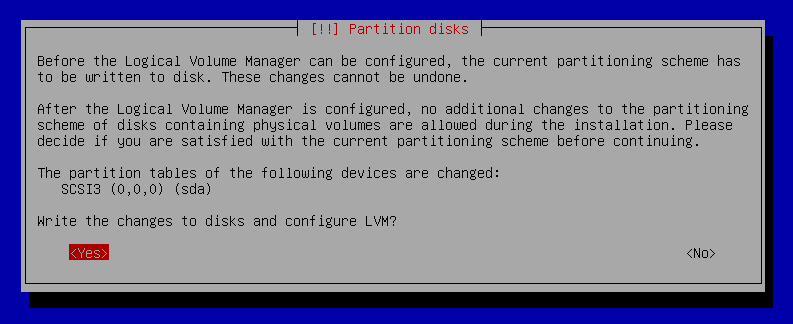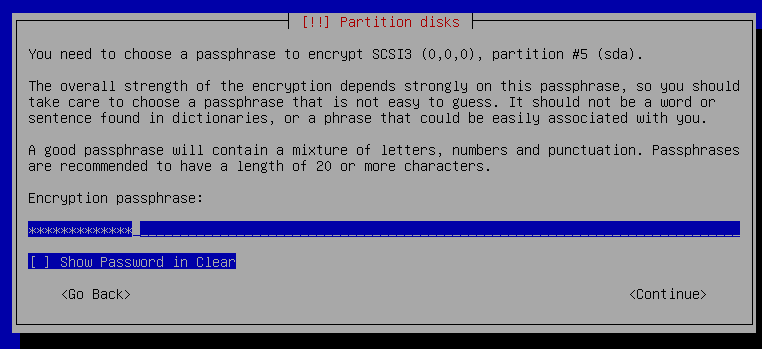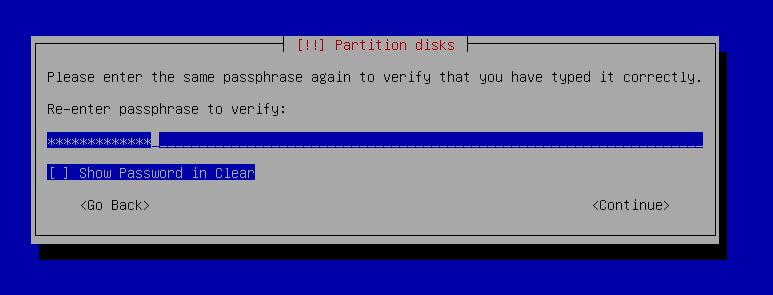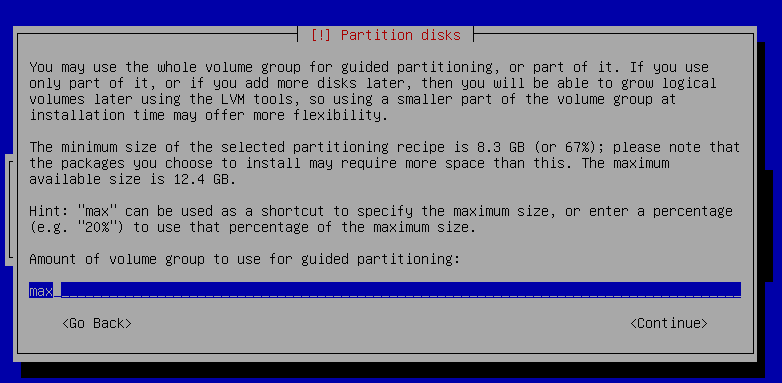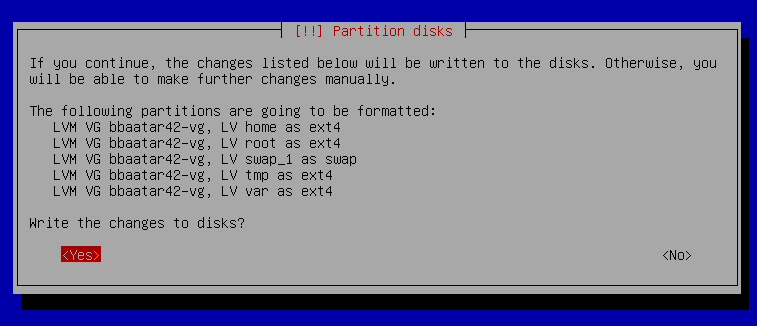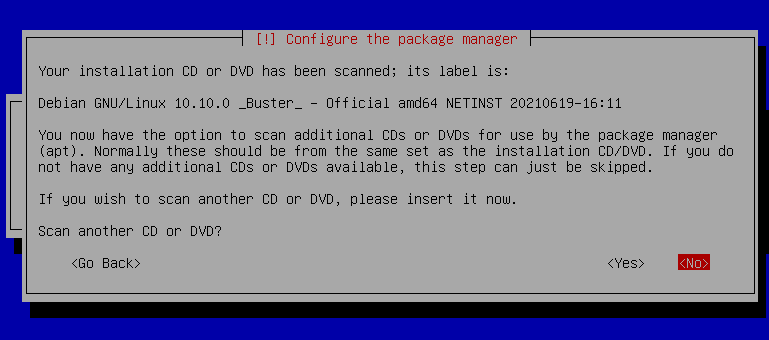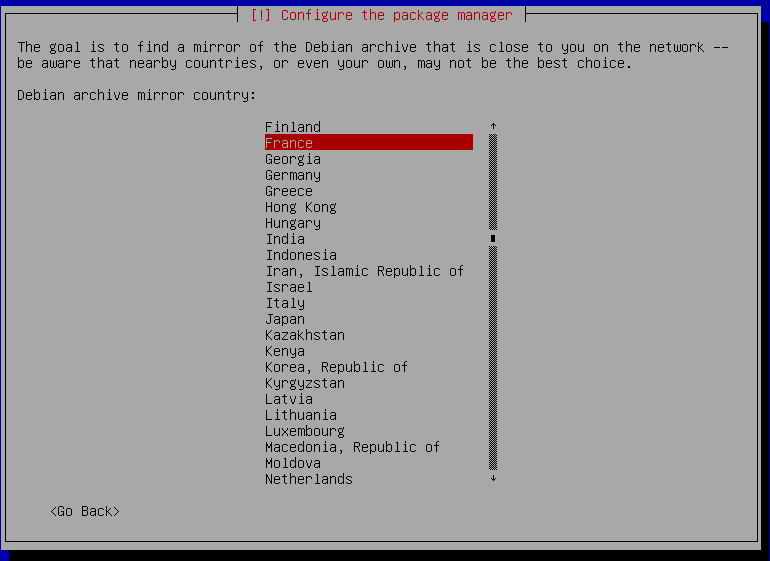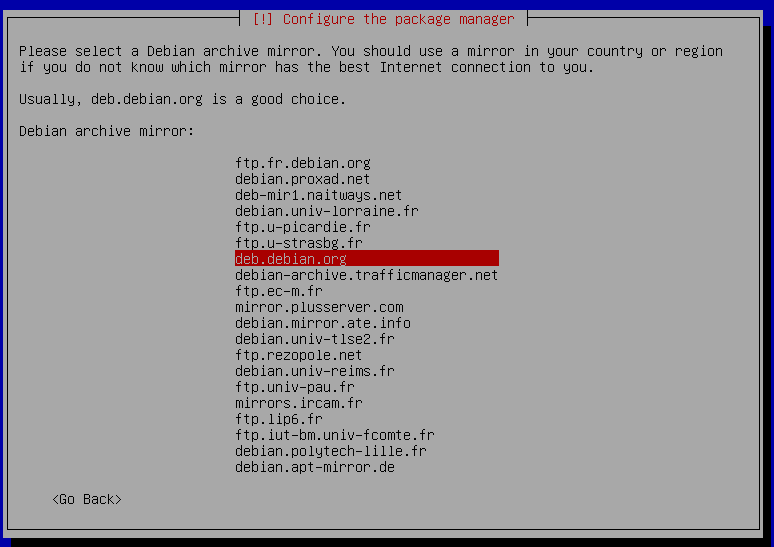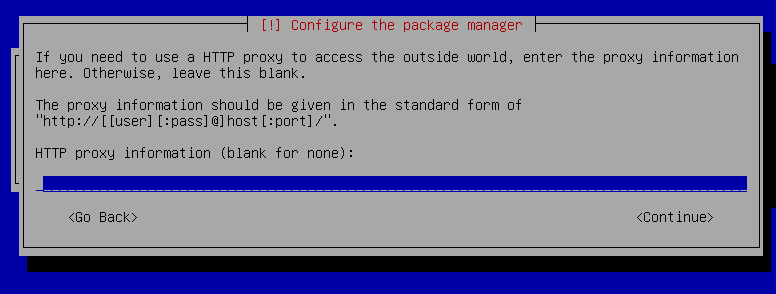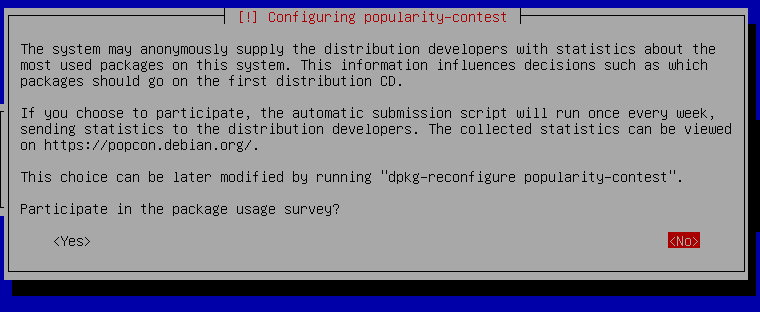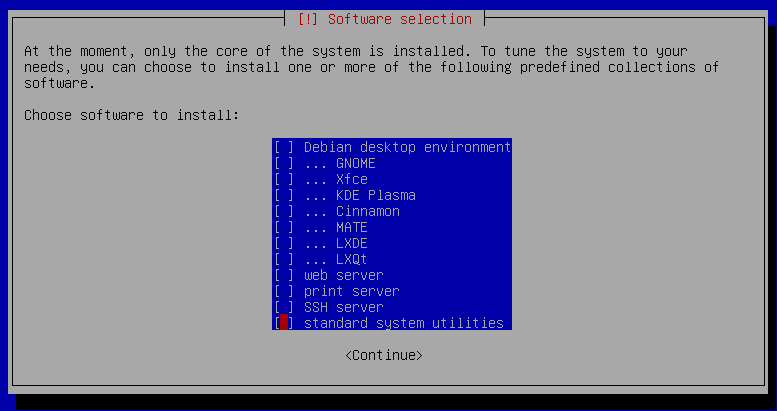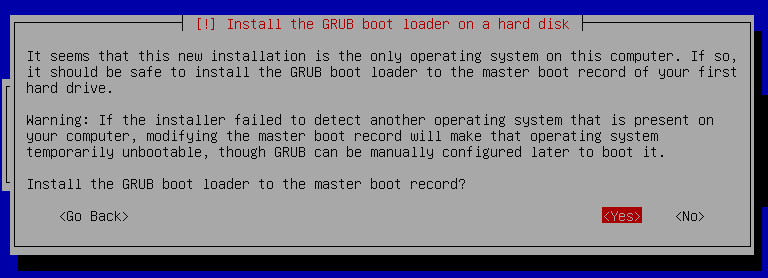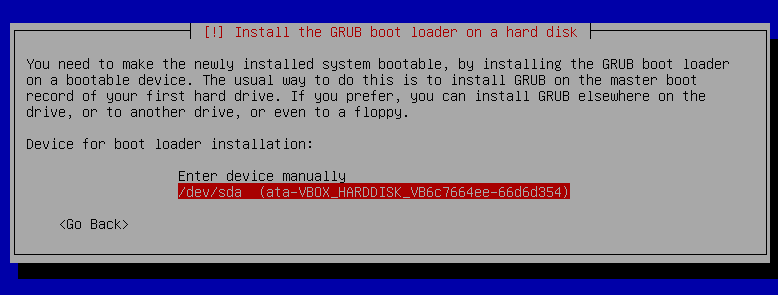Born2BeRoot Guide
This guide has 8 Parts:
- Part 1 - Downloading Debian
- Part 2 - Starting Your Virtual Machine
- Part 3 - Configurating Your Virtual Machine
- Part 4 - Connecting to Virtual Machine using SSH
- Part 5 - Continue Configurating Your Virtual Machine
- Part 6 - Creating sudo.log
- Part 7 - Signature.txt
- Part 8 - Your Born2BeRoot Defence Evaluation with Answers
This guide assumes Virtual Box is downloaded on your system
Part 1 - Downloading Debian
-
Click on this link https://www.debian.org
-
click Download
-
click on 'debian-11.6.0-amd64-netinst.iso' to download it.
Part 1.1 - Creating folder for the VM, (this part is important for projects completed on the 42 computers)
- Open iterm2
- From the home directory type
cd sgoinfre/students
- Then make a directory
mkdir <your intra username>
-
Then type
chmod 700 <your intra username> && cd <your intra username> -
Then make directory called
born2beroot(don't change the permisions)
- Add your Debian Download (from earlier) to the "born2beroot" folder you just created.
Part 2 - Starting your Virtual Machine
-
Open
Virtual Box -
Click on
New
- Change Machine Folder to
sgoinfre/students/your_intra_login/Virtual Machine Nameand then clickcontinueto move to the next step.
- Set Memory Size as
1024 MBand click continue.
- Click
Create a Virtual Hard Disk Nowand then clickCreateto create the Hard Disk.
- Click
VDI (VirtualBox Disk Image)and then clickContinueto select VDI.
- Click
Dyamically Allocatedand then clickContinueto only use space on your Hard Disk.
- Set Size as
8.00 GBand then clickContinue.
- Click
Settingsand then clickStorageto view your Virtual Machine Storage.
- Click on
Optical Drive(Optical Drive - far right blue small box).
- Click on
Choose a disk file...(2nd option in the drop down).
- Then click on the Virtual Machine file (.iso).
- Click on your
Virtual Machineand then click'okto confirm you Virtual Machine Storage.
- Click
Start(The Green Arrow➡️ ) to start your Virtual Machine.
Part 3 - Configurating Your Virtual Machine
In the Virtual Machine, you will not have access to your mouse and will only use your Keyboard to operate your Virtual Machine.
- To increase your Virtual Machine size, press
command+con your Apple Keyboard at the same time and then use your mouse to drag the screen to the size you wish or do the following:
- Use the arrow keys on your keyboard
🔼 🔽 and pressEnteronInstall(This will start the installation proccess).
- Press
enteronEnglish - Englishor your language of preference.
- Press
enteronAustraliaor the country your installing this Virtual Machine.
- Press
enteronAmerican Englishor your keyboard of preference.
⚠️ NOTE: Whenever you are told to create a password, use the same password as everything.
- Create a Host Name as your login, with 42 at the end (eg. mmirzaie42) - write down your Host Name, as you will need this later on.
- Leave this blank, press
enteron Continue.
- Create a Password for the Host Name - write this down as well, as you will need this later on.
- Create a User Name without 42 at the end (eg. mmirzaie) - write down your Host Name, as you will need this later on.
-
Create a Password for the User Name (you might as well use the same password as your Host Password) write this down as well, as you will need this later on.
-
Press
enteron yourTimezone(The timezone your currently doing this project in).
- Press
enteronGuided - use entire disk and set up encrypted LVM(Second to last option from the list).
- Press
enteron Select Disk to Partition.
- Press
enteron SelectSeparate /home partition(Last option from the list).
- Select
Yesand pressEnterto write the changes to disks and configure LVM.
- Press
EntertocancelErasing data as you won't need this for your Virtual Machine.
- Create a Encryption passphrase - write this down as well, as you will need this later on.
- Retype the Encryption passphrase you just created.
- Type in
maxand press enter onContinueto assign the amount of volume group to use for guided partitioning.
- Press enter on
Finish partitioning and write changes to disk.
- Press enter on
Yesfor Partition Disks.
- Press enter on
Nofor Configure the package manager.
- Press
enterin the country that your in.
- Press
enteron deb.debian.org.
- Leave this blank and press
enteron continue.
- Press
enteronnofor Configuring popularity-contest.
- Deselect
SSH serverandstandard system utilitiesby pressing theSpace keyand then pressenteronContinue.
- Press
enteronYesto Install the GRUB boot loader on a hard disk.
- Press
enteron /dev/sda
- Press
enteroncontinueto finish the installation.
- Before we move onto starting your Virtual Machine, make sure you have your Host, Username and Password/s saved or written down somewhere.
Part 3.1 - Starting Your Virtual Machine
-
Press enter on
Debian GNU/Linux -
Enter your encryption password you had created before
-
Login in as the your_username you had created before
-
Type
lsblkin your Virtual Machine to see the partition
Part 3.2 - Installing Sudo (Super User Do)
- First type
su -to login in as the root user. - Then type
apt-get update -y - Then type
apt-get upgrade -y - Then type
apt install sudo - Then type
usermod -aG sudo your_usernameto add user in the sudo group (To check if user is in sudo group, typegetent group sudo) - Type
sudo visudoto open sudoers file - Lastly find - # User privilege specification, type
your_username ALL=(ALL) ALL
Part 3.3 - Installing Git and Vim
- Then type
apt-get install git -yto install Git - Then type
git --versionto check the Git Version - Then type
apt-get install vim -yto install Vim
Part 3.4 - Installing and Configuring SSH (Secure Shell Host)
- Type
sudo apt install openssh-server - Type
sudo systemctl status sshto check SSH Server Status - Type
sudo vim /etc/ssh/sshd_config - Find this line
#Port22 - Change the line to
Port 4242without the # (Hash) in front of it - Find this line
#PermitRootLogin - Change to
PermitRootLogin no
- Save and Exit Vim (press
escthenshift ZZ) - Then type
sudo grep Port /etc/ssh/sshd_configto check if the port settings are right
Part 3.4.1
- Type
sudo nano /etc/ssh/ssh_config - Find line containing
#Port 22 - Change it to
Port 4242
- Lastly type
sudo service ssh restartto restart the SSH Service
Part 3.5 - Installing and Configuring UFW (Uncomplicated Firewall)
These steps are important as they will allow you to connect to your virtual machine through your host machine with iterm.
- First type
apt-get install ufwto install UFW - Type
sudo ufw enableto inable UFW - Type
sudo ufw status numberedto check the status of UFW - Type
sudo ufw allow sshto configure the Rules - Type
sudo ufw allow 4242to configure the Port Rules - Lastly Type
sudo ufw status numberedto check the status of UFW 4242 Port
Part 4 Connecting to Virtual Machine using SSH
- To exit your Virtual Machine and use your mouse, press
commandon your Apple Keyboard and your mouse should appear - Go to your Virtual Box Program
- Click on your Virtual Machine and select
Settings - Click
NetworkthenAdapter 1thenAdvancedand then click onPort Forwarding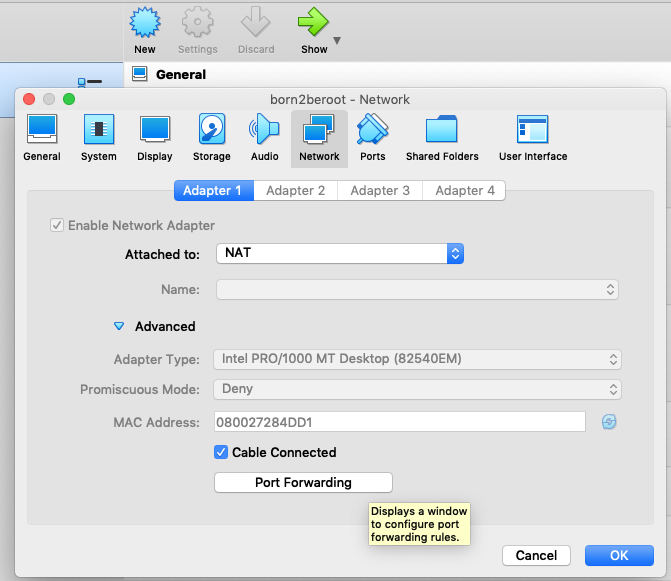
- Change the Host Port and Guest Port to
4242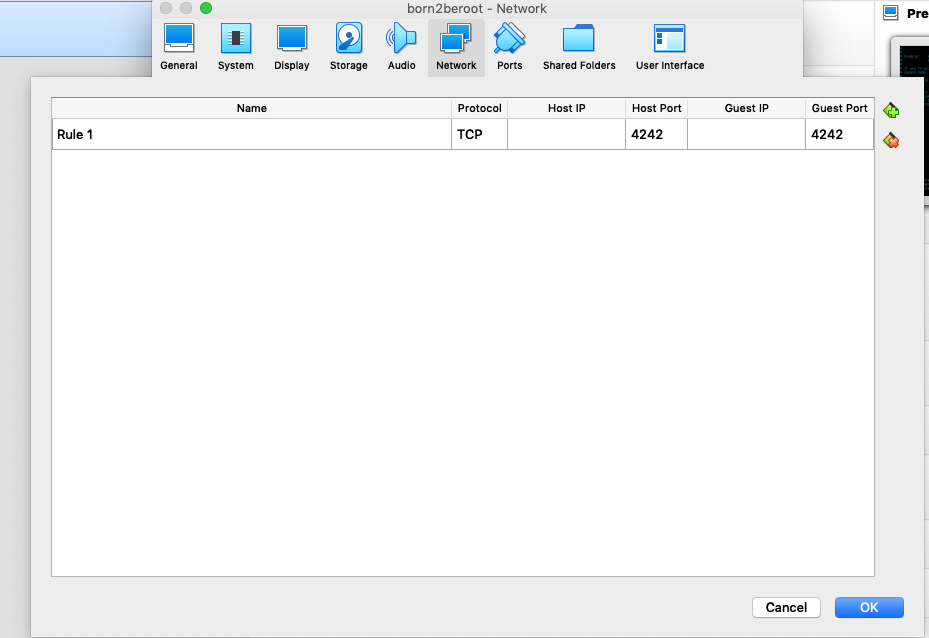
- Then head back to your Virtual Machine
- Type
sudo systemctl restart sshto restart your SSH Server - Type
sudo service sshd statusto check your SSH Status
part 4.1 connect your host computer to the VM
- Open an iTerm and type the following
ssh your_username@127.0.0.1 -p 4242 - In case an error occurs, then type
rm ~/.ssh/known_hostsin your iTerm and then retypessh your_username@127.0.0.1 -p 4242- 2.2 now you are connect.
- Lastly type
exitto quit your SSH iTerm Connection
Part 5 - Continue Configurating Your Virtual Machine
Part 5.1 - Setting Password Policy
-
First type
sudo apt-get install libpam-pwqualityto install Password Quality Checking Library -
Then type
sudo vim /etc/pam.d/common-password -
Find this line.
password requisite pam_deny.soor
- 4.1 The line should now look like this -
password requisite pam_pwquality.so retry=3 minlen=10 ucredit=-1 dcredit=-1 maxrepeat=3 reject_username difok=7 enforce_for_root
- Save and Exit Vim
- Next type in your Virtual Machine
sudo vim /etc/login.defs - Find this part
PASS_MAX_DAYS 9999PASS_MIN_DAYS 0PASS_WARN_AGE 7 - Change that part to
PASS_MAX_DAYS 30andPASS_MIN_DAYS 2keepPASS_WARN_AGE 7as the same - Lastly type
sudo rebootto reboot the change affects
Part 6 - Creating sudo.log
- First type
su -, then type your password. - Then type
cd .. - Then type
cd var/log - Then type
mkdir sudo(if it already exists, then continue to the next step). - Then type
cd sudo && touch sudo.log - Then type
cd ~/../
Part 6.1 - Configuring Sudoers Group
- First type
sudo nano /etc/sudoersto go the sudoers file - Now edit your sudoers file to look like the following by adding in all of the defaults in the image below -
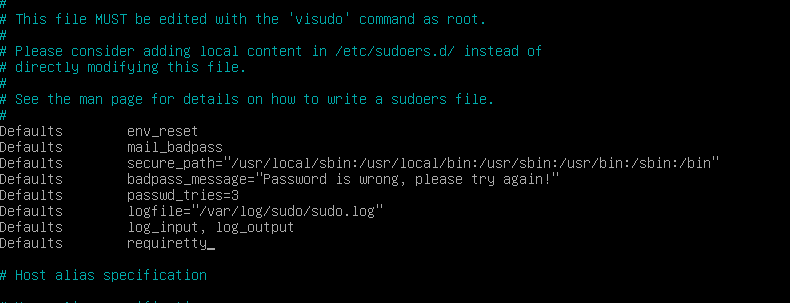
Defaults env_reset
Defaults mail_badpass
Defaults secure_path="/usr/local/sbin:/usr/local/bin:/usr/bin:/sbin:/bin"
Defaults badpass_message="Password is wrong, please try again!"
Defaults passwd_tries=3
Defaults logfile="/var/log/sudo.log"
Defaults log_input, log_output
Defaults requiretty
Part 6.2 - Crontab Configuation
- Then type
apt-get install -y net-toolsto install the netstat tools - Then type
cd /usr/local/bin/ - Then type
touch monitoring.sh - Lastly type
chmod 777 monitoring.sh
Part 6.2.1 - Copy Text Below onto Virtual Machine
The clip board of the host machine and VM are not connected so we will have to connect to the VM with ssh.
- Copy this text (To copy the text below, hover with your mouse to the right corner of the text below and a copy icon will appear).
#!/bin/bash
arc=$(uname -a)
pcpu=$(grep "physical id" /proc/cpuinfo | sort | uniq | wc -l)
vcpu=$(grep "^processor" /proc/cpuinfo | wc -l)
fram=$(free -m | awk '$1 == "Mem:" {print $2}')
uram=$(free -m | awk '$1 == "Mem:" {print $3}')
pram=$(free | awk '$1 == "Mem:" {printf("%.2f"), $3/$2*100}')
fdisk=$(df -BG | grep '^/dev/' | grep -v '/boot$' | awk '{ft += $2} END {print ft}')
udisk=$(df -BM | grep '^/dev/' | grep -v '/boot$' | awk '{ut += $3} END {print ut}')
pdisk=$(df -BM | grep '^/dev/' | grep -v '/boot$' | awk '{ut += $3} {ft+= $2} END {printf("%d"), ut/ft*100}')
cpul=$(top -bn1 | grep '^%Cpu' | cut -c 9- | xargs | awk '{printf("%.1f%%"), $1 + $3}')
lb=$(who -b | awk '$1 == "system" {print $3 " " $4}')
lvmu=$(if [ $(lsblk | grep "lvm" | wc -l) -eq 0 ]; then echo no; else echo yes; fi)
ctcp=$(ss -neopt state established | wc -l)
ulog=$(users | wc -w)
ip=$(hostname -I)
mac=$(ip link show | grep "ether" | awk '{print $2}')
cmds=$(journalctl _COMM=sudo | grep COMMAND | wc -l)
wall " #Architecture: $arc
#CPU physical: $pcpu
#vCPU: $vcpu
#Memory Usage: $uram/${fram}MB ($pram%)
#Disk Usage: $udisk/${fdisk}Gb ($pdisk%)
#CPU load: $cpul
#Last boot: $lb
#LVM use: $lvmu
#Connections TCP: $ctcp ESTABLISHED
#User log: $ulog
#Network: IP $ip ($mac)
#Sudo: $cmds cmd"
- Then open up a iTerm2 seperate from your Virtual Machine and type in iTerm
ssh your_host_name42@127.0.0.1 -p 4242and then type your password, when it asks for it. - Then type
cd /usr/local/bin. - Then type
nano monitoring.shand paste the text above into the vim monitoring.sh you just created, by doingcommand+von your Apple keyboard. - Save and Exit your
monitoring.sh
- 5.1 - Then type
exitto exit the iTerm SSH Login. - 5.2 - Then go back to your Virtual Machine (not iTerm) and continue on with the steps below.
- Then type
sudo visudoto open your sudoers file - Add in this line
your_username ALL=(ALL) NOPASSWD: /usr/local/bin/monitoring.shunder where its written %sudo ALL=(ALL:ALL) ALL - It should look like this
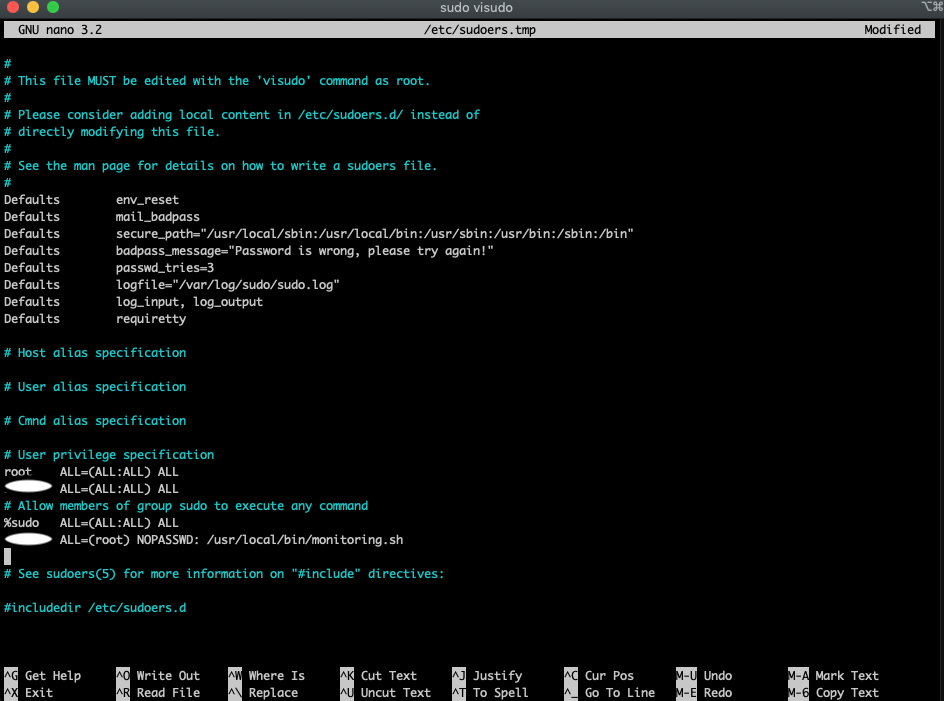
- Then exit and save your sudoers file
- Now type
sudo rebootin your Virtual Machine to reboot sudo - Type
sudo /usr/local/bin/monitoring.shto execute your script as su (super user) - Type
sudo crontab -u root -eto open the crontab and add the rule - Lastly at the end of the crontab, type the following
*/10 * * * * /usr/local/bin/monitoring.shthis means that every 10 mins, this script will show
Part 7 - Signature.txt (Last Part Before Defence)
- Open iTerm and type
cd - Then type
cd sgoinfre/students/<your_intra_username>/VirtualBox VMs - Type
shasum VirtualBox.vdior whatever your Virtual Machine is called (This can take from a few seconds to 5 mins). - Copy the output number and create a signature.txt file and paste that number in the file.
- Now you submit the signature.txt file with the output number in it.
🥳 CONGRATULATIONS! YOU HAVE NOW FINISHED! NEXT IS THE EVALUATION 🔽
Part 8 - Born2BeRoot Defence Evaluation with Answers
Link to the Born2BeRoot Evaluation Checklist created by Adrian Musso-Gonzalez.
The Evaluation Questions
Why did I choose Debian?
Easier to install and configure so better for personal servers.
Difference between Debian and Rocky
The main difference between Debian and Rocky is that Debian is an independent, community-driven Linux distribution with a focus on stability, while Rocky Linux is a community enterprise Operating System (OS) based on CentOS, a previously popular Linux distribution that was discontinued by Red Hat. Additionally, Debian has a larger user community, a broader range of packages, and a more diverse set of supported architectures, while Rocky Linux aims to provide a stable, secure, and reliable enterprise-grade platform for organizations.
What is a Virtual Machine?
Is a resource that uses software instead of a physical computer to run programs or apps. Each VM has its own operating system and functions separately, so you can have more than one VM per machine. Can be used to test applications in a safe, separate environment. Works by using software to simulate virtual hardware and run on a host machine.
What is the difference between aptitude and APT (Advanced Packaging Tool)?
- Aptitude is a high-level package manager while APT is lower level which can be used by other higher level package managers
- Aptitude is smarter and will automatically remove unused packages or suggest installation of dependent packages
- Apt will only do explicitly what it is told to do in the command line
What is AppArmor?
Linux security system that provides Mandatory Access Control (MAC) security. Allows the system admin to restrict the actions that processes can perform. It is included by default with Debian. Run aa-status to check if it is running.
Password Rules
For the password rules, we use the password quality checking library and there are two files the common-password file which sets the rules like upper and lower case characters, duplicate characters etc and the login.defs file which stores the password expiration rules (30 days etc).
Sudo nano /etc/login.defs
Sudo nano /etc/pam.d/common-password
What is LVM
Logical Volume Manager – allows us to easily manipulate the partitions or logical volume on a storage device.
UFW (Uncomplicated Firewall)
UFW is a interface to modify the firewall of the device without compromising security. You use it to configure which ports to allow connections to and which ports to close. This is useful in conjunction with SSH, can set a specific port for it to work with.
What is SSH?
SSH or Secure Shell is an authentication mechanism between a client and a host. It uses encryption techniques so that all communication between clients and hosts is done in encrypted form. User on Mac or Linux can use SSH the terminal to work on their server via SSH.
What is Cron?
Cron or cron job is a command line utility to schedule commands or scripts to happen at specific intervals or a specific time each day. Useful if you want to set your server to restart at a specific time each day.
cd /usr/local/bin– to show monitoring.shsudo crontab -u root -e– to edit the cron jobchange script to */1 * * * * sleep 30s && script path– to run it every 30 seconds, delete the line to stop the job from running.
Creating a Group
- First type
sudo groupadd user42to create a group - Then type
sudo groupadd evaluatingto create an evaluating group - Lastly type
getent groupto check if the group has been created
Creating a User and Assigning Them Into The Group
- First type
cut -d: -f1 /etc/passwdto check all local users - Type
sudo adduser new_usernameto create a username - write down your new_username, as you will need this later on.
- 2.1 Type
sudo usermod -aG user42 your_username - 2.2 Type
sudo usermod -aG evaluating your_new_username
- Type
getent group user42to check if the user is the group - Type
getent group evaluatingto check the group - Type
groupsto see which groups the user account belongs to - Lastly type
chage -l your_new_usernameto check if the password rules are working in users
Evaluation Commands for UFW, Group, Host, lsblk and SSH
sudo ufw statussudo systemctl status sshgetent group sudogetent group user42sudo adduser new usernamesudo groupadd groupnamesudo usermod -aG groupname usernamesudo chage -l username- check password expire ruleshostnamectlhostnamectl set-hostname new_hostname- to change the current hostname- Restart your Virtual Machine.
sudo nano /etc/hosts- change current hostname to new hostnamelsblkto display the partitionsdpkg -l | grep sudo –to show that sudo is installedsudo ufw status numberedsudo ufw allow port-idsudo ufw delete rule numberssh your_user_id@127.0.0.1 -p 4242- do this in terminal to show that SSH to port 4242 is working
